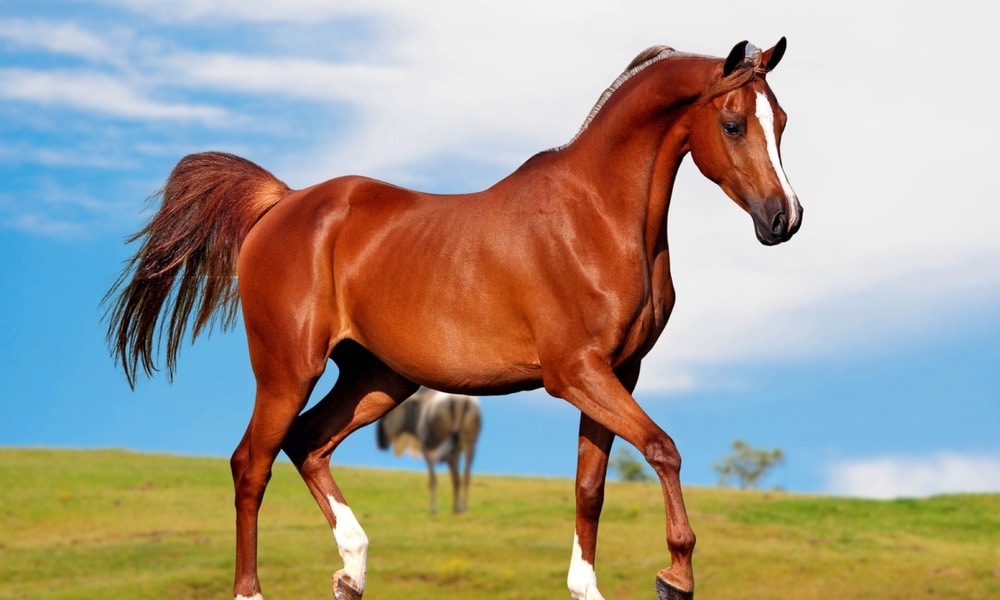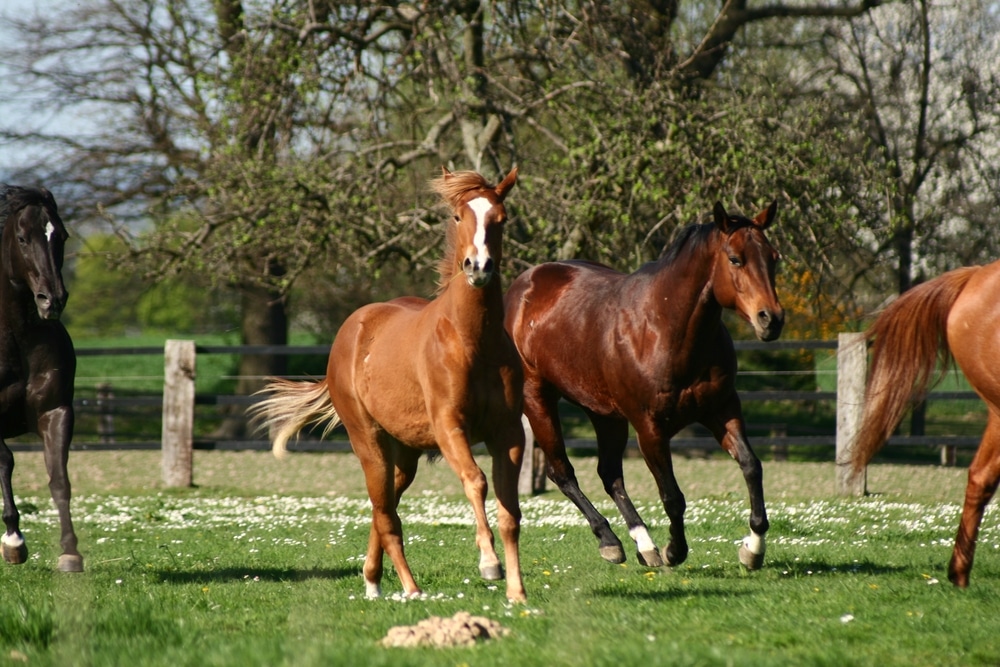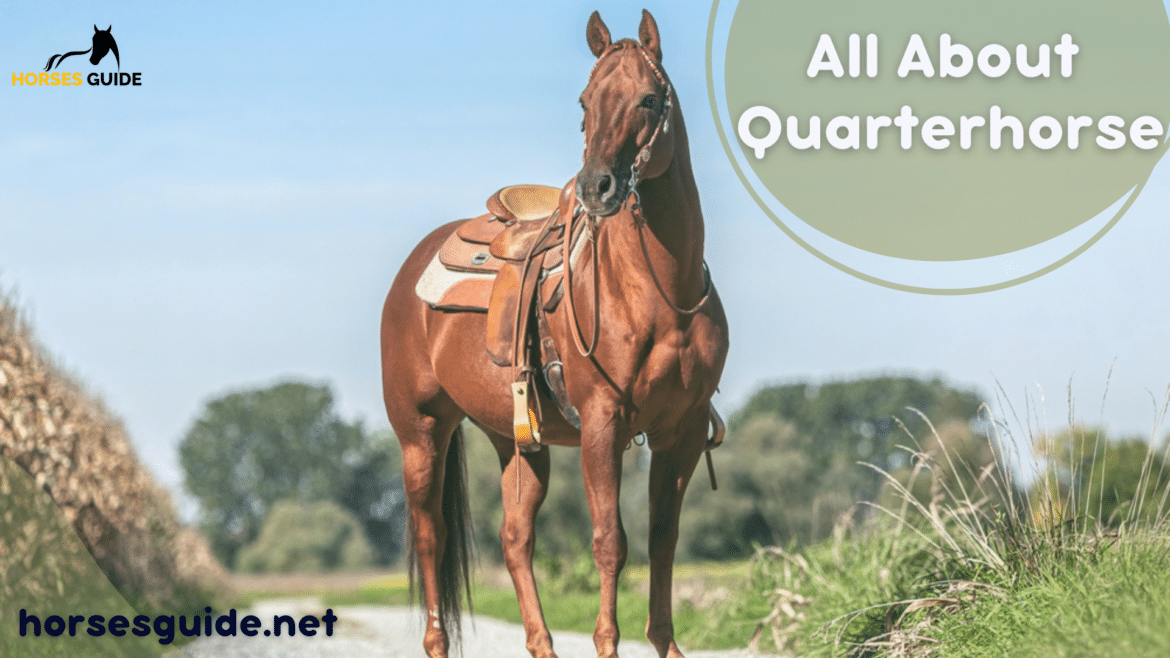Table of Contents
As an equine lover, you probably know that the variety is vast. Each breed is identified given its unique characteristics and traits. Once you decide to pet a horse, it would be stupid to ignore an exceptional and renowned breed, i.e., the American Quarterhorse. These handsome fellows stand out due to their short speed over short distances, calm temperament, and versatility to adapt to various settings. So, who will want any other horse when they can have a horse with “ALL IN ONE.” Let’s talk about Quarterhorses in detail.
What are Quarter Horses?

Renowned for its agility, speed, and dependability, the American Quarterhorse is one of the most well-liked and adaptable quarter-horse breeds worldwide. This breed in the US stands out for its exceptional qualities, whether it is used for trail riding, working with cattle, or competing as an American Quarter show horse. We’ll explore the traits, background, and breeding of this popular horse breed on quarter horses in this piece.
Traits of Quarterhorse
The American Quarter Horse is a popular breed among equestrian aficionados because of its unique physical and behavioral attributes.

1. Physical Appearance
One of the traits of the quarter horse is its compact and muscular physique, which helps it perform well over short distances. There is a vast spectrum of colors, with brownish-red being one of the most prevalent varieties.
Important characteristics are as follows:
- Height: at the withers, usually between 14 and 16 hands (56 and 64 inches).
- Weight: These horses range in weight from 950 to 1,200 pounds, according to bloodlines, activity level, and diet.
- Body Build: Their muscular, well-defined muscles, especially in the hindquarters, enable them to accelerate quickly and dash with great force.
- Head: The breed has a characteristically alert appearance due to its short, large head, wide forehead, and keen eyes.
Breeds of quarter horses have coats that range in color from bay to black to chestnut to bay roan. But the most prevalent color is sorrel, a red that leans brown.
2. Temperament
Because of their gentle and calm behavior, quarter horses are considered to be easy to train. Additionally, they are very versatile and fit riders of various abilities. They are well-liked in barrel racing, trail riding, and working with cattle because of their tendency to work hard.
3. Quickness and Adaptability
Short-distance speed is the breed’s specialty, especially in the quarter-mile sprint. These quarter-mile horses are perfect for sports requiring swift, explosive power, including racehorses and barrel racing, as they can accelerate to 55 mph in brief bursts.
4. Flexibility
The adaptability of American Quarter Horses is one of its traits. It is excellent for working with cattle, cutting, reining, jumping, and trail riding, among other things. What is the purpose of a quarter horse? Not surprisingly, given its extensive usage in rodeos, ranch work, and recreational activities, this breed is among the most versatile in the horse world.
History of Quarter Horse

Folks, let me tell you that the quarter horse breed has a rich and varied history that dates back to the early days of American colonization. It has developed into a breed of horse renowned for its exceptional strength, speed, and adaptability over the ages.
1. America’s Colonial Origins
The Quarter Horse’s history dates back to Colonial America in the 1600s. Horses from Spain and England were brought by settlers, and they crossed with local horses to create the modern Quarterhorse. The nickname “Quarter Horse” came about as a result of these horses’ rapid rise to prominence in quarter-mile races.
2. Impact of Thoroughbreds
The emergence of Thoroughbreds like Janus in the 1700s had a greater impact on the horse breed. His offspring improved the speed and endurance of the Quarter Horse, which improved the breed’s fitness for sprint races.
3. Work on Ranches and Westward Expansion
In the 1800s, as people migrated west, the Quarter Horse became essential to ranch labor. Because of its rapid acceleration and dexterity, it was perfect for working with cattle. Its adaptability also gave rise to the moniker “cow horse.” The breed was well-established in American ranch culture by this point.
4. American Quarter Horse Association (AQHA)
Due to the breed’s increasing popularity, the American Quarter Horse Association (AQHA) was founded in 1940. With millions of horses registered under its supervision, the AQHA upholds strict criteria for pedigree, performance, and conformation.
The AQHA has broadened its scope to include a variety of disciplines, from working ranch horses to show horse contests, despite being most recognized for its speed and agility.
Breeding of Quarter Horse

In order to improve the speed, strength, and temperament of Quarter Horses, certain attributes must be chosen throughout the breeding process. In the US, this breed places a high value on adaptability, strength, and the capacity to deal with animals.
1. Choosing Breeding Stock
When choosing breeding stock, the physical characteristics and genetically tested health of the horse are taken into account, particularly to prevent problems such as muscular tremors and malignant hyperthermia. Performance histories and American Quarter show horse prowess are given top priority, particularly in fields like cattle labor and barrel racing.
2. Lineage and Pedigree
Some bloodlines are known to produce horses who are exceptionally fast or skilled at working cows. Genetic testing of bloodlines guarantees the preservation of quarter-horse traits, avoiding problems such as malignant hyperthermia in subsequent generations.
3. Hybrid Vigor and Crossbreeding
To improve specific features, especially in racehorses that need speed, some breeders combine American Quarter Horses with Thoroughbreds. Some crosses, like the Appendix Quarterhorse, blend the speed of a Thoroughbred with the strength of an American Quarter Horse.
4. Artificial Embryo Transfer
Artificial insemination and embryo transfer have made it possible for modern breeders to continue honing quarter-horse traits while lowering the risks involved with natural breeding.
Folks, you can learn a lot about breeding basics in this article before you make any decision.
Conclusion
Finalizing what has been covered so far, the article shed details on a unique and well-known breed, i.e., the American Quarter Horse. Usually, equine lovers look for specific traits when choosing their partner, whether a stallion horse, a Quarterhorse, or a baby horse. The American fellows stand out due to the wide assortment of traits found in them. So, while giving it a consideration, follow our article guide and choose the best.



